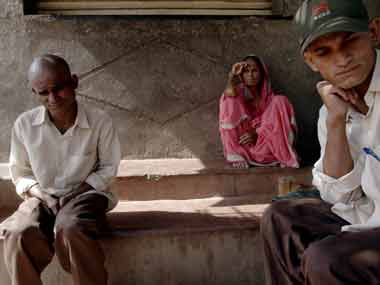After the recent recommendation of the National Commission for Women to decriminalise sex work, the proposed move by the Union government to decriminalise suicide is a refreshing shift towards human rights-based law. What the government is striking off with this decision is Section 309 from the Indian Penal Code (IPC), which seeks to punish people for failed suicides. With 309 in place, people who fail to die while attempting suicide will face criminal action and land up in jail for upto a year. For many in otherwise desperate situations, it has been a double whammy and certainly cruel. The WHO sees suicide as a public health problem and wants countries to adopt a public health approach involving multiple sectors. Our Mental Health Bill 2013 also views suicide from a public health perspective, when it notes that “who attempts to commit suicide shall be presumed, unless proved otherwise, to be suffering from mental illness at the time of attempting sucide and shall not be liable to punishment under the said Section.” [caption id=“attachment_1844867” align=“alignleft” width=“380” class=" “]  Representational image. Reuters[/caption] Our own Law Commission has called Section 309 “a cruel and irrational provision” that may result in punishing a person “who has suffered agony and is suffering ignominy” again because of his/her failure to commit suicide. In the civilised world, there are no two ways about it, but India has been dragging its feet since 1996, even though the Supreme Court had decriminalised it in 1994. For the national media, the immediate reference for the decision was to Irom Sharmila, the Manipuri activist who has been on a hunger strike for 18 years against alleged Army atrocities. Once the government decision becomes of rule of law, she cannot be under detention. Will she continue to starve or will the state be legally right to force-feed her? That remains to be seen. It is great that the government is moving in the right direction as far as human rights are concerned. However, lifting punishment is only a minor fraction of addressing the problem and there is a long way to go. Suicide is the second largest killer of people in India, which incidentally also bears 17 percent of the global burden. Most importantly, majority of the victims belong to the productive age group, and more men (twice as many) kill themselves than women. Now, with the penal hurdles removed the road ahead is prevention which essentially means addressing a wide range of conditions that drive people to desperation which includes illnesses, poverty, crises in the agricultural sector, domestic violence, family problems and mental health. Close to half of the suicide victims are driven to desperation because of family problems and illnesses according to the National Crime Records Bureau. Although suicides by farmers get a lot of attention in the media, poverty and sudden change in financial conditions appear to be a less prominent cause. It’s also corroborated by the fact that the incidence is high in some some richer states. Similarly, urban areas also account for a lot of suicide deaths while the general impression is that it’s mainly a rural phenomenon. Along with the decriminalisation, both the central and state governments are also duty bound to demystify and destigmatise suicide. The WHO, in its global report “Preventing Sucide” lists these six critical facts that counter the common myths:
- Heightened suicide risk is often short-term and situation-specific. While suicidal thoughts may return, they are not permanent and an individual with previously suicidal thoughts and attempts can go on to live a long life.
- Given the widespread stigma around suicide, most people who are contemplating suicide do not know who to speak to. Rather than encouraging suicidal behaviour, talking openly can give an individual other options or the time to rethink his/her decision, thereby preventing suicide.
- Suicidal behaviour indicates deep unhappiness but not necessarily mental disorder. Many people living with mental disorders are not affected by suicidal behaviour, and not all people who take their own lives have a mental disorder.
- The majority of suicides have been preceded by warning signs, whether verbal or behavioural. Of course there are some suicides that occur without warning. But it is important to understand what the warning signs are and look out for them.
- Suicidal people are often ambivalent about living or dying. Someone may act impulsively by drinking pesticides, for instance, and die a few days later, even though they would have liked to live on. Access to emotional support at the right time can prevent suicide.
- People who talk about suicide may be reaching out for help or support. A significant number of people contemplating suicide are experiencing anxiety, depression and hopelessness and may feel that there is no other option
In fact, any suicide prevention plan should include interventions that address these facts. More over, as the Mental Health Bill underlines, “the appropriate Government shall have a duty to provide care, treatment and rehabilitation to a person, having mental illness and who attempted to commit suicide, to reduce the risk of recurrence of attempt to commit suicide.” As a member state, India is a signatory to the WHO Mental Health Action Plan 2013-2020, which commits to a reduction of suicide rate by 10 percent. It’s a tall order because during the decade 2002-2012, the incidence of suicide in India rose by 22.7 percent. The country has just taken a baby step; what’s required are giant leaps.


)

)
)
)
)
)
)
)
)



